Seventeen-twenty Julian was built near Sloan Lake, on the east side of Julian Street, between West 17th and 18th Avenues. More specifically, she resided on block 16, lot 20 in Gurley's Resubdivision of Cheltenham Heights (note: assessor records indicate a building's legal description: block, lot, and subdivision names).
The Denver Assessor's Property Taxation and Assessment System states that 1720 Julian was built in 1885. This date seems unlikely (we often see inaccurate dates in the Property Taxation and Assessment System), however, as Gurley's Resubdivision of Cheltenham Heights was constructed in 1887.
Denver building permits begin in 1889. Searching these permits by 1720 Julian's legal description only resulted in record of a brick barn being built in the rear of the house in 1904. There is no permit existing for the original home at 1720 Julian.
In this case, there was a street name change. According to the Denver directories, up until around 1899, Julian had been known as "Tenth (Highlands)", West 17th Avenue was called "Ellsworth," and West 18th Avenue went by "Saguache."
To complicate matters, it appears that some areas of Denver didn't use a house numbering system at all. For example, in the 1889 Denver city directory, a woman named Mrs. Mary E. Taylor is listed as residing on "10th, s. of Saguache, Highlands." It is, however, unclear which house on 10th Mrs. Taylor was living in.
In situations where a house's date of build can't be proven by a building permit, city directories, assessor records, or real estate and fire insurance maps can often provide evidence (these types of maps show a building's footprint on a lot).
In this case, however, consulting the 1887 Robinson's Atlas and the 1893 Sanborn Fire Insurance map proved fruitless, as this particular area of Denver was not covered by these maps. The 1905 Baist Atlas, however, does show a brick structure (indicated by a pink rectangle) on lot 20 of block 16 in Gurley's Resubdivision of Cheltenham Heights.
While the exact date of build for 1720 Julian Street remains murky, city directories give clear proof of the names and occupations of people who made the house their home over the years: William E. Griffiths, fireman (1901), Alexander Stoker, carpenter (1902-1909); Abraham Werber, driver, laborer and court house watchman (1910-1914); Rose L. Markel, stenographer; Max Ambush, peddler, produce dealer, grocer, city inspector (1915-1938).
On April 14, 2020, the Denver Landmark Commission reviewed 1720 Julian Street. In order to become a Denver landmark, a structure must meet three out of ten criteria (below) and retain physical integrity:
- Have a direct association with a significant historic event or with the historical development of the city, state, or nation;
- Have direct and substantial association with a recognized person or group of persons who had influence on society;
- Embody the distinctive visible characteristics of an architectural style or type;
- Be a significant example of the work of a recognized architect or master builder;
- Contain elements of design, engineering, materials, craftsmanship, or artistic merit which represent a significant innovation or technical achievement;
- Represent an established and familiar feature of the neighborhood, community or contemporary city, due to its prominent location or physical characteristics;
- Promote understanding and appreciation of the urban environment by means of distinctive physical characteristics or rarity;
- Represent an era of culture or heritage that allows an understanding of how the site was used by past generations;
- Be a physical attribute of a neighborhood, community, or the city that is a source of pride or cultural understanding;
- Be associated with social movements, institutions, or patterns of growth or change that contributed significantly to the culture of the neighborhood, community, city, state, or nation.
The Landmark Commission determined that the house at 1720 Julian didn't meet the criteria and approved its demolition.

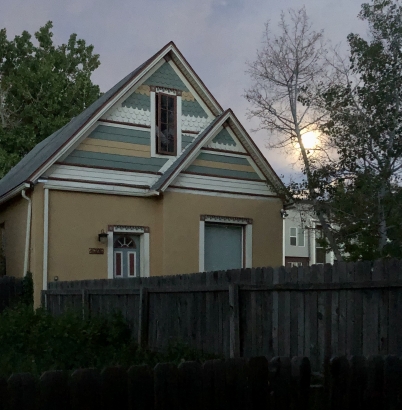
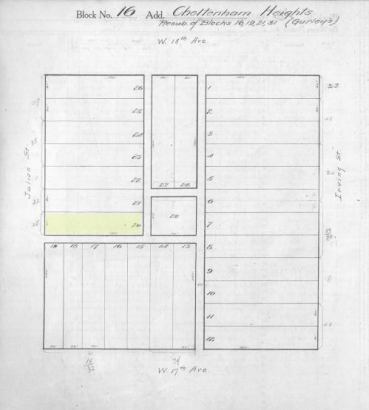
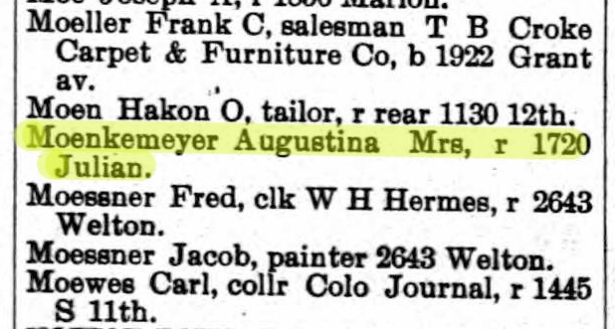
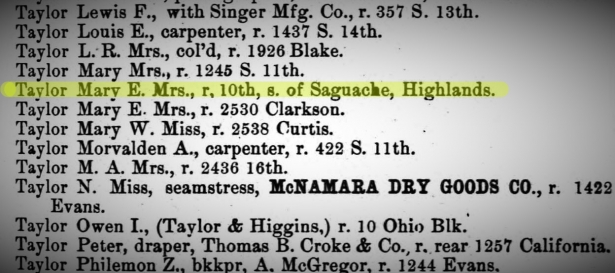
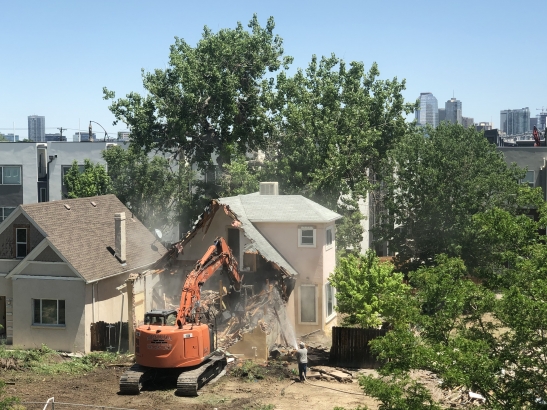
Comments
I was a CABI/building
I was a CABI/building inspector for many years and there were often pangs of sadness knowing a building would be demolished. Glad for this obituary which preserves the history. Always enjoyed learning the history.
Oh, I can imagine those pangs
Oh, I can imagine those pangs of sadness! Thank you for reading and sharing, James!
Thank you for telling this
Thank you for telling this lyrical story, entirely reflective of one of Denver’s most interesting neighborhoods. Is this how a city looses her soul? One stupid demolition at a time? The Plague has many tentacles.
For a period of my life, I
For a period of my life, I lived in a fabulous Queen Anne Victorian house built in 1886 on Federal Boulevard between 28th and 29th Avenues. My neighboring couple houses to the north were of the same era. Those neighboring homes are gone now and a very large building has taken their place. Part of Denver's charm and beauty is older homes such as these. The rapidity with which they are being erased devastates my heart. I'm glad I no longer live in the Queen Anne Victorian because there is now no light from the north windows, no privacy in the yard, and a complete change in the block. And it's all driven by greed. Every old home should have such a fine obituary. Thank you!
For a period of my life, I
For a period of my life, I lived in a fabulous Queen Anne Victorian house built in 1886 on Federal Boulevard between 28th and 29th Avenues. My neighboring couple houses to the north were of the same era. Those neighboring homes are gone now and a very large building has taken their place. Part of Denver's charm and beauty is older homes such as these. The rapidity with which they are being erased devastates my heart. I'm glad I no longer live in the Queen Anne Victorian because there is now no light from the north windows, no privacy in the yard, and a complete change in the block. And it's all driven by greed. Every old home should have such a fine obituary. Thank you!
What a sweet tribute to a
What a sweet tribute to a gracious old woman. May her memory bring smiles to those who loved her.
There's a lot of information
There's a lot of information missing from 1938 to April 2020. Why was the house demolished? Condemned or gentrification? Sad that the city doesn't make more areas Historical areas so that homes like this can be renovated instead od destroyed. I would bet this house has better bones condemned than most new homes.
Hi Chris,
Hi Chris,
True, not much information presented for 1938 to 2020 (had to keep the length of the article on the brief side).
Up until March 2020, 1720 Julian (along with 1712, 1716, 1726, 1730, 1734, and 1738 Julian) were active rental properties owned by the same company. All of these were demolished in June. There were plans in the works for a multi-unit rental development, but I'm unsure of the status of this project. I'll update here when I found out more information.
Thanks so much reading and commenting, Chris!
I had a home at 36th and
I had a home at 36th and Julian that looked similar and was built in 1891.
Ah, good to know, Roberta!
Ah, good to know, Roberta! Thanks for reading!
Add new comment